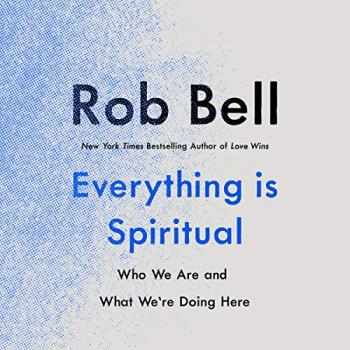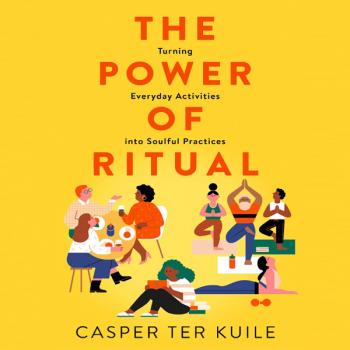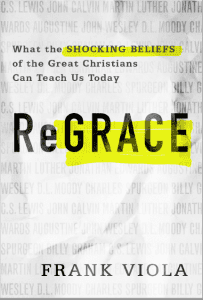“Take a moment to run through the five senses: Where did you see God today? What have you heard that reveals God’s goodness? What did you smell that brought you joy? How, today, has touch brought you comfort? What have you tasted that has reminded you of God’s abundance? You can do this anytime and anywhere. Even on the most frustrating, I- got-stuck- in-traffic- and-my- job-is- awful sort of day, there are always little signs of God’s goodness, filling every one of our senses.” — Ginny Kubitz Moyer, author, Taste & See
In her new book Taste & See: Experiencing the Goodness of God with Our Five Senses, Catholic writer Ginny Kubitz Moyer shows us how our senses are a powerful, biblically based means for us to encounter God. She invites us to draw closer to God through prayer practices that employ taste, touch, sight, smell and hearing to deepen our experience of the divine in our lives. From roses to the rosary, from candle smoke to Communion wine, Taste and See invites readers truly find God in all things—from the mundane to the sublime.
We invited Kubitz Moyer to respond to some questions about her book and how we can begin to taste and see God for ourselves.
 In the Introduction to your book, you recall being more than a bit surprised when a college literature professor referred to Catholicism as a “sensual religion.” What did he – and you now, in your book — mean by that?
In the Introduction to your book, you recall being more than a bit surprised when a college literature professor referred to Catholicism as a “sensual religion.” What did he – and you now, in your book — mean by that?
It was a memorable comment, and one that certainly got the attention of this sleepy undergraduate. The comment stayed with me over the years, because the more I started to ponder the Catholic faith of my childhood, the more I realized that professor was onto something. Catholicism is a sensual religion, one whose liturgies and devotions are so rooted in the senses: not only listening to a sermon, but also seeing the crucifix, tasting the Eucharist, smelling incense, touching rosary beads. In this way, I think Catholicism reflects the reality of being human. We’re not disembodied brains; we have bodies that understand the world through our senses. And I came to realize that paying more attention to my senses was a powerful way of recognizing God’s presence in my life. I came to realize that the senses were five entry points for God to become known to me.
Experiencing God through our senses — in the stuff of our daily lives — is a particularly Ignatian way of understanding the connection between the physical and spiritual. Who was St. Ignatius and what was his particular contribution to Catholic teaching and spirituality?
St. Ignatius, who was born in 1491 in Spain, was the founder of the Jesuit order of priests (Pope Francis is perhaps the most famous Jesuit other than Ignatius himself). He developed a spirituality that is marked by the belief that God can be found in all things and that we encounter God in the day-to- day experiences of our lives, not just the “churchy” ones. He developed a prayer retreat called The Spiritual Exercises, as well as a shorter, more accessible form of daily prayer called the Examen, which (to summarize it as simply as possible) involves reviewing one’s day and looking for the evidence of God in it. The prayer exercises that follow each chapter in my book are a kind of riff on the Examen, but focused specifically on the experiences of the senses.
How do we know, for certain, if something we experience through our senses is “of God” or not? Are there experiences that are not of God?
A big part of Ignatian spirituality is discernment – sifting through and prayerfully reflecting upon your lived experiences to understand them more fully. In so doing, you’re able to see which ones are leading you to greater communion with God and which aren’t. The prayer exercises in the book invite readers to reflect on their sensory experiences and what they may be teaching us about God, faith, love, forgiveness, community, and many other things. At times our reflections may lead us to realize that our experiences haven’t been life-giving ones, and that’s also an important part of the process. And it’s good to mention that celebrating the senses isn’t about becoming gluttons or hedonists; quite the contrary. As an example, one chapter in the book addresses fasting, and talks about how moderation makes us appreciate the sense of taste all the more.
You say that the sensual nature of Catholicism is what drew you back into the church in your mid-twenties. What does experiencing God, sensually, offer lapsed Catholics (or any faith), as well as practicing Catholics?
I go into more detail in the book, but in a nutshell,when I was away from the Church it was because it seemed like a guilt-ridden, killjoy kind of faith where you were supposed to subjugate the body and focus only on the soul. (I guess I was the victim of some bad theology somewhere along the line.) But that professor’s comment got me thinking, and when I lived abroad in Paris in my twenties I encountered these amazing churches and cathedrals that were feasts for the senses. Their beauty touched me and was the catalyst for me to reengage with my faith. And I started to realize, on a subconscious level at first, that this was a faith that actually celebrates the body, a faith that wanted me to experience God with all five senses. It all circles back to the person of Jesus Christ: he was God incarnate, and he too had a body. It can be amazingly easy to forget that, but I have found that my Catholic faith helps me remember.
Who did you write this book for, and how do you hope they use it?
I wrote it for anyone who wants to reflect more consciously on body and soul and how they work together. It comes at the topic from a Catholic perspective and includes some Catholic subjects, but the overall premise of the book is to encourage mindful awareness of how we can encounter God in all things, as Ignatius would say.
Can you give us some examples of some of the prayer practices you suggest in the book? Maybe one from each of the five senses?
The book is divided into five sections, one for each sense. Within each section are five chapters, each dealing with a specific experience of that sense: the feel of water on the skin for touch, or the sound of a loved one’s voice for hearing, or kissing for taste. Others are more Catholic- specific: a chapter on confession for the hearing section, or on the rosary for touch. Each chapter is followed by a series of prayer steps that invite readers to reflect on how that sensory experience has been present in their own life, with an eye to looking for how God may be revealed in the process.
What is your favorite way to pray?
Any way I can. Some days I find certain forms of prayer more compelling than others, and I go with what works. I usually find that sitting at my prayer desk for a few minutes in the evening, lighting a candle, and prayerfully reviewing the day is renewing and helps me see God’s patterns in my life. Often I write down my prayers, or the fruit of my prayers …. it helps me remember. I also love the prayer practice St. Ignatius recommended in which you imagine yourself as part of a Gospel story, in the middle of the scene, with all its sights and sounds and smells and action. It never fails to be a powerful experience, one that makes Christ feel closer than ever.
What is one prayer we can do right now, in the middle of our day, to experience God with us?
Take a moment to run through the five senses: Where did you see God today? What have you heard that reveals God’s goodness? What did you smell that brought you joy? How, today, has touch brought you comfort? What have you tasted that has reminded you of God’s abundance? You can do this anytime and anywhere. Even on the most frustrating, I- got-stuck- in-traffic- and-my- job-is- awful sort of day, there are always little signs of God’s goodness, filling every one of our senses.
Read an excerpt from Taste & See at the Patheos Book Club here!












